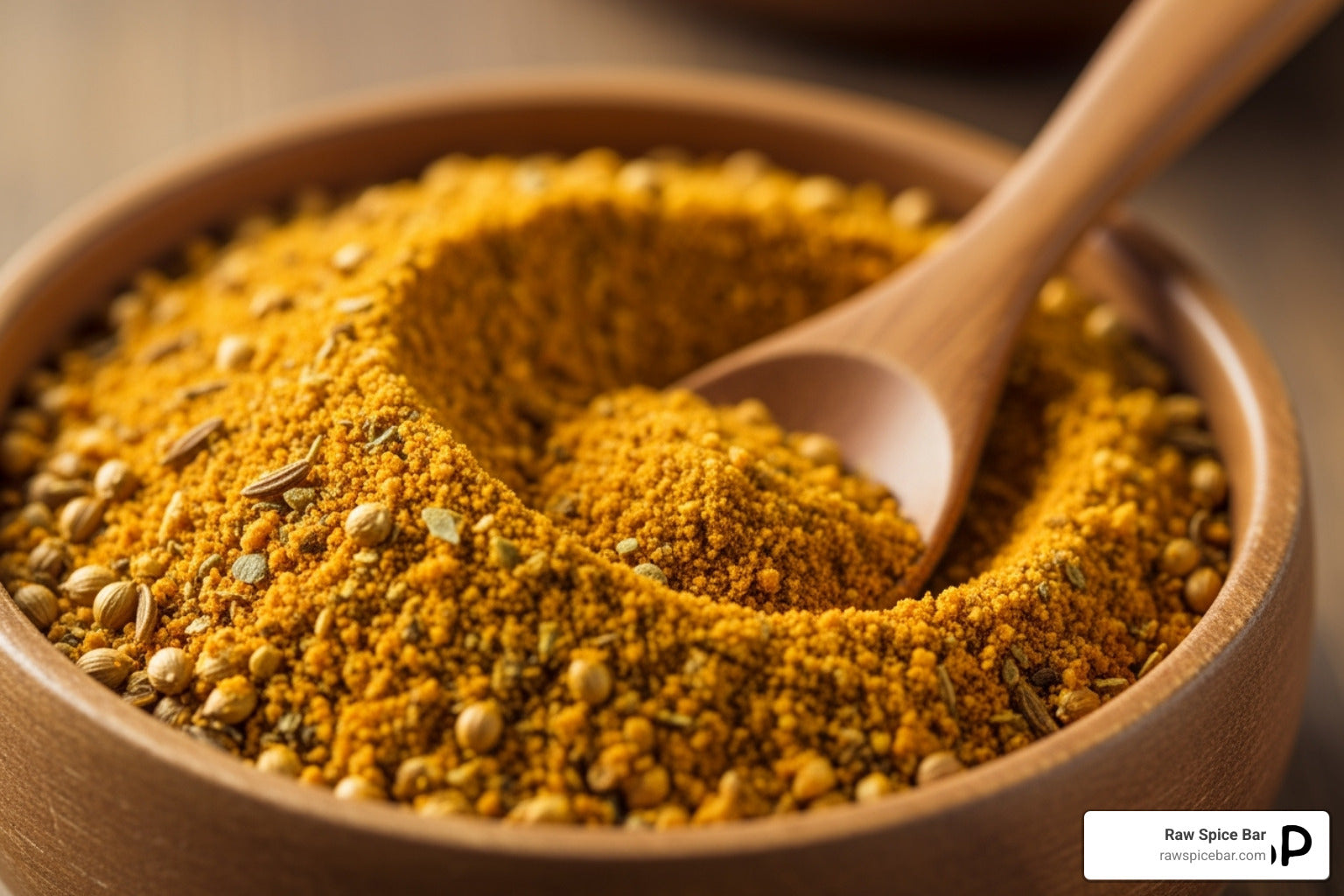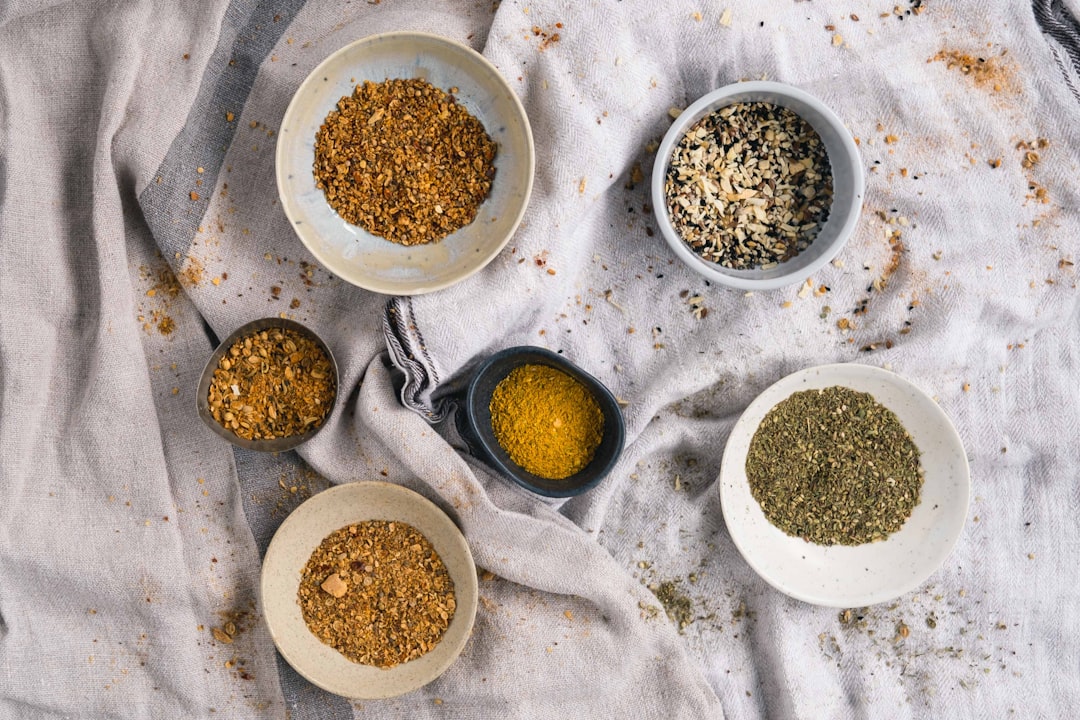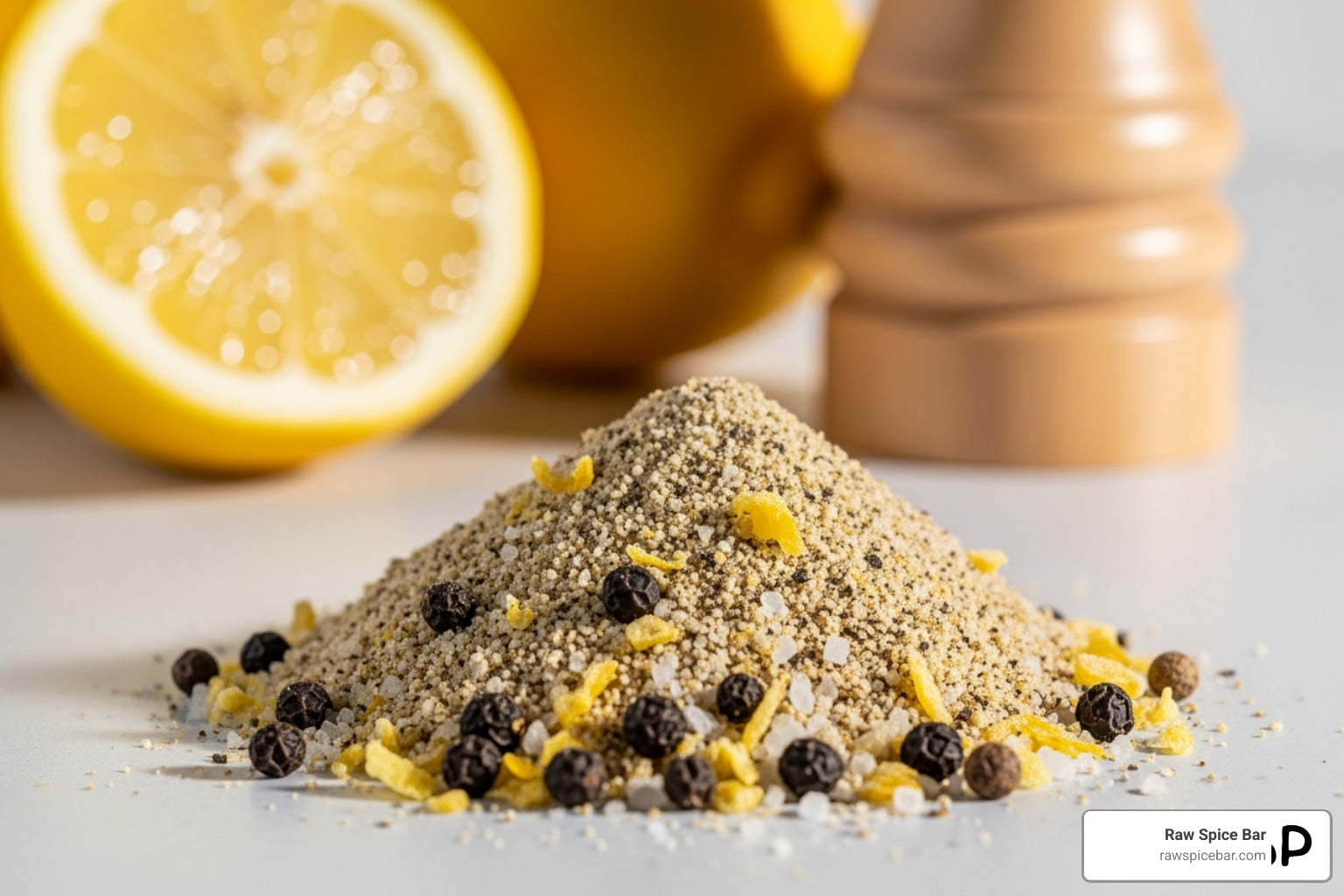When you step into the world of culinary arts, one thing is clear: the difference between a good dish and a great one often lies in the depth of its flavor.
Expertly crafted spice blends can transform your meals from ordinary to extraordinary. At Raw Spice Bar, we aim to do just that by creating rich, deep flavors with our globally inspired spices.
Imagine tasting a dish that transports you to another place entirely—a Creole blend that brings the vibrant energy of New Orleans or a Greek blend that takes you to the warm coasts of the Mediterranean. We handcraft our spice blends using only the freshest ingredients sourced from around the world. Each blend tells a story and enhances your cooking in a way that store-bought spices simply can't.
To make this experience even more accessible, we offer a global spice subscription. You can receive fresh, healthy spice blends delivered right to your home. Every month, you get to try new spices, complete with recipe cards to guide you through creating delicious meals with ease.
It's a journey for your taste buds that brings fun and flavor to your kitchen.
In this blog, you will learn:
-
The importance of expertly crafted spice blends and how they can elevate your cooking.
-
The historical and cultural significance of spice blends from around the world.
-
How Raw Spice Bar’s subscription service brings global flavors directly to your kitchen.
So, are you ready to elevate your cooking game?
Let us guide you on a flavor journey that will make every meal extraordinary.
The Art of Blending
Blending spices is a craft where each ingredient is carefully selected to enhance the richness and depth of your dishes. From understanding individual flavor profiles to integrating global techniques, creating the perfect blend brings exciting, diverse tastes into your meals.
Understanding Flavor Profiles
When you blend spices, the goal is often to balance sweet, sour, and sharp notes.
Each spice has a taste that contributes to the overall flavor profile. By learning how these flavors combine, you can create unique blends that suit specific dishes.
A good blend depends on the dish's base ingredients and desired taste. For example, curry powders might blend turmeric, cumin, and coriander, while a Mexican dish might focus on paprika and cumin.
Experiment with different spices to find harmonious combinations that elevate your cooking.
Historical Techniques
Blending has ancient roots, with techniques passed down through generations.
Historically, spices were often ground together using mortar and pestle, allowing the flavors to meld. This method ensured a more even distribution of flavors compared to pre-ground spices.
In many cultures, blending is a ritual that enhances meals and preserves traditions. Indian masalas, Chinese five-spice, and Middle Eastern za'atar use distinct techniques that respect the integrity of each spice.
Look into how different cultures craft blends. It offers insights into regional flavors and inspires you to try new methods.
Culinary Science in Blending
Science plays a vital role in spice blending, ensuring each component contributes to the taste and aroma spectrum.
Understanding solubility, moisture content, and oil levels helps craft mixtures where each spice supports the others. Heat can change how spices taste; toasting seeds can unleash richer flavors. Balancing acidic and salty elements prevents any one taste from overpowering the dish.
Learning these principles gives you control over the outcome of your blends, letting you adjust and perfect each mix.
Selecting Quality Ingredients
Choosing the best ingredients is essential to achieve rich, deep flavors in your cooking. Attention to detail in sourcing and selecting can make a significant difference, elevating meals from ordinary to extraordinary.
Sourcing the Best Components
To create outstanding dishes, you need to start with high-quality components.
Freshness is key. Select vibrant and aromatic ingredients. Choose whole spices, as pre-ground versions often lose their potency.
Farmers' markets are excellent places to find fresh, flavorful choices. These markets often feature produce picked at peak ripeness, ensuring superior taste.
Organic vs. Non-Organic
When selecting ingredients, the choice between organic and non-organic is significant.
-
Organic produce is grown without synthetic pesticides or fertilizers, often resulting in a more natural flavor profile. This can be crucial when seeking that vibrant taste.
-
Non-organic options are typically more affordable and widely available. However, they may lack the subtlety of flavor found in organic produce.
Consider what matters most for your dish and budget.
Taste Development
Mastering taste development in cooking involves skillfully layering flavors and balancing different tastes to create memorable dishes. This knowledge is valuable in transforming everyday meals using expertly crafted spice blends.
Flavor Layering
Layering is essential to achieving rich, complex flavors. This process involves adding ingredients at different stages of cooking to build depth.
Each spice or herb adds a new dimension through aroma, taste, or texture. Begin with a base of aromatics such as onions and garlic, which provide a savory foundation. Next, cumin or coriander should be introduced to infuse warmth and earthiness.
The thoughtful addition of ingredients across cooking stages creates a delightful fusion of flavors.
Balance and Contrast
Achieving balance and contrast in your dishes is crucial for creating pleasing and satisfying meals. This means using a variety of flavors, such as sweet, salty, sour, bitter, and umami, in harmony.
If a dish feels too rich, a squeeze of lemon can add brightness. A pinch of salt can heighten the flavor without overpowering it. Authentic spice blends can assist in finding the right balance of tastes, providing an array of thoughtfully curated spices to mix and match.
By focusing on these elements, your dishes will not only taste good but also offer an engaging culinary experience that will keep everyone at the table asking for more.
Crafting Techniques
Crafting spice blends involves various techniques that enhance the depth and richness of flavors. These methods include roasting, toasting, infusion, and aging. Each process brings unique characteristics to the spices, ensuring new and exciting experiences for your taste buds.
Roasting and Toasting
Roasting and toasting are crucial steps in creating spice blends.
You unlock deeper flavors and aromatic oils that are otherwise dormant by gently heating whole spices. This process can transform a mild spice into a vibrant, nutty-flavored ingredient.
The key to this technique is timing. Over-toasting can lead to bitterness, while under-toasting may fail to develop the full range of flavors. Monitor the spices frequently for best results, stirring them lightly in a dry pan over medium heat until fragrant.
This method is particularly effective for seeds such as cumin and coriander. Not only does it enhance their flavor, but it also enriches your dishes with an inviting aroma that elevates the entire experience.
Infusion Essentials
Infusion involves steeping spices in a liquid to extract flavors.
This technique is essential for making flavorful broths, teas, and oils. The slow transfer of spice essence into the liquid brings a nuanced depth to recipes.
Success with infusion requires low and controlled heat. Too high heat can destroy delicate oils and alter the intended flavors. A slow simmer is ideal, allowing the infusion to develop over time.
Notable spices for infusion include cinnamon and star anise. They add warmth and complexity to dishes, making a simple meal memorable. Infusing spices is an excellent way to enhance your culinary creations and bring out their best attributes.
Aging and Maturation
Aging and maturation are critical for deepening the flavor profile of spice blends. This process allows flavors to meld and develop complexity over time.
For instance, aged paprika might develop a smokier and more intense flavor. Proper storage is essential during this period. Keep spices in a cool, dry place to prevent spoilage and maximize flavor.
You can achieve a robust flavor that transforms simple recipes into gourmet delights through aging.
Recipe Formulation
Creating rich, deep flavors in your kitchen begins with choosing the right spice blends. You can elevate everyday meals into flavorful masterpieces by exploring classic and innovative combinations.
Classic Blends
Classic spice blends are the foundation of many delicious dishes.
These tried-and-true combinations highlight essential flavors in cuisines worldwide. For example, a well-crafted Creole blend, with its mix of paprika, cayenne, and herbs, transports you straight to the heart of New Orleans.
Mediterranean blends often feature combinations like oregano, rosemary, and thyme. These blends create robust flavors that enhance the natural taste of your ingredients.
You can easily find these blends in grocery stores, but freshly made versions can make a significant difference. Using freshly sourced spices ensures a bold and vibrant taste in your meals.
Innovative Combinations
Innovative spice combinations offer endless possibilities if you want to explore new flavor horizons. Spices like turmeric, ginger, and cinnamon can be combined to create unique profiles. These blends can serve as an excellent base for curries and stir-fries.
At Raw Spice Bar, you can experience globally inspired blends delivered to your doorstep. Our spice subscription introduces you to fresh, healthy blends every month. These are paired with recipe cards to make trying new cuisines fun and accessible.
Trying out these new combinations spices up your dishes and encourages creativity in your cooking.
Sensory Analysis
Exploring the sensory aspects of spice blends enriches your culinary experience. This section discusses tasting methods and the language used to describe flavors, helping you appreciate the nuances in their expertly crafted blends.
Tasting Methodology
When tasting spices, begin with a clean palate.
-
Ensure your mouth is free from strong flavors by drinking water or eating plain bread before starting.
-
Smell the spices first; aromas can reveal much about the blend’s characteristics. Notice the different notes you can identify.
-
Next, taste a small amount on its own. Focus on the flavors that unfold, considering elements like sweetness, bitterness, and spiciness.
-
Think about how each spice interacts with your taste buds.
-
Afterward, try the spice blend in a simple dish. This allows you to evaluate how the flavors change when cooked.
Descriptive Sensory Language
Descriptive sensory language helps articulate the flavors you experience.
Begin by identifying basic taste profiles, such as salty, sweet, sour, or bitter. Move on to more complex flavors, like earthy or floral notes. Use vivid adjectives to describe the spice blend: does it have a warming sensation, or is it fresh and zesty?
Utilize comparisons with familiar ingredients to capture more subtle nuances. For example, a blend might be nutty, like almonds, or smoky, like paprika. Pay attention to texture as well—spices can feel smooth or gritty, altering your perception.
By developing this language, you better understand what makes our spice blends unique and flavorful.
Culinary Applications
Incorporating expertly crafted spice blends into your cooking can elevate your dishes with minimal effort. At Raw Spice Bar, you can explore flavors worldwide through our varied spice subscriptions. Each month, you receive a new blend with recipe cards, making global cuisine accessible and exciting.
Versatile Uses:
-
Soups and Stews: A touch of our spice blends can transform a simple soup into a flavorful experience. A teaspoon can add depth to a broth or stew, enhancing the richness.
-
Marinades and Rubs: Our spices can be used as the base for marinades. Mix them with olive oil, vinegar, or yogurt, and marinate meats or vegetables for an infusion of flavor before grilling.
-
Vegetable Enhancements: Roast or sauté your favorite vegetables with spices. The blends can add complexity and make even everyday sides feel special.
-
Baking & Desserts: Our spices aren't just for savory dishes. Ingredients like cinnamon or cardamom in some of our blends can be wonderful in baking, adding unexpected twists to cookies, cakes, or even homemade granola.
-
Creative Beverages: Add a pinch of spice blend to your morning coffee or tea for a warm, aromatic note. Some blends pair beautifully with cocktails, offering new taste dimensions.
With a subscription to Raw Spice Bar, you gain convenient access to these global flavors. Experimentation in your kitchen becomes a delightful journey, making each meal an opportunity to explore new culinary landscapes.
Frequently Asked Questions
Are you curious about how spice blends can transform your cooking or what makes a great spice subscription? We’ve got answers to some of the most common questions we get from culinary explorers like you!
What are the characteristics of coffee blends that possess rich and deep flavors?
Coffee blends known for rich flavors often include beans sourced from various regions. Each region contributes unique tastes, from chocolaty notes to hints of fruitiness. Blending beans can create a full-bodied experience with layers of flavor.
Can you recommend any particularly well-reviewed blends known for their depth of flavor?
Many coffee blends are celebrated for their depth and complexity. Try exploring regional blends or single-origin beans that highlight natural characteristics. Some popular options might include blends with beans from Ethiopia or Colombia, recognized for their unique and robust flavor profiles.
How does one achieve a rich flavor profile in homemade coffee?
To achieve a rich flavor in homemade coffee, use fresh beans and the right brewing method. Grinding beans just before brewing helps preserve flavor. Experiment with brewing techniques like French press or espresso to enhance richness.
What is the difference between a coffee's strength and its richness?
Strength refers to the concentration of coffee solubles, while richness relates to the complexity and fullness of flavor. A strong coffee isn’t necessarily rich, as richness depends on flavor notes and body, not just concentration.
Does the intensity of a coffee's flavor correlate with its caffeine content?
The intensity of a coffee’s flavor doesn’t directly relate to caffeine content. Flavor is influenced by roast level and bean origin, while caffeine levels depend on bean type and brewing method. Darker roasts often taste bolder but have slightly less caffeine than lighter roasts.
Are certain spices or seasonings known to enhance the richness of food and drink flavors?
Yes, many spices, such as cinnamon, nutmeg, and cardamom, can enhance flavor. Raw Spice Bar offers globally inspired spice blends that can elevate your culinary dishes, adding depth and complexity to your meals. Consider signing up for a spice subscription to explore various flavors.




